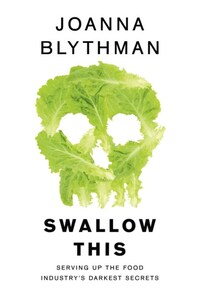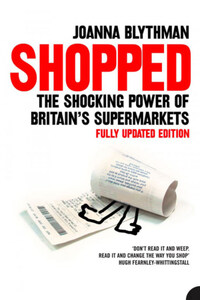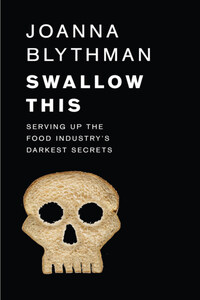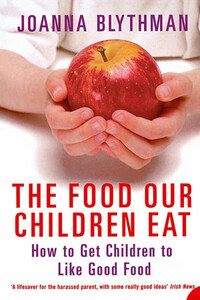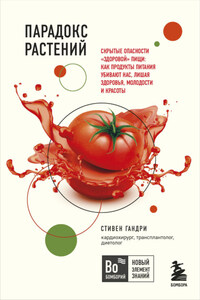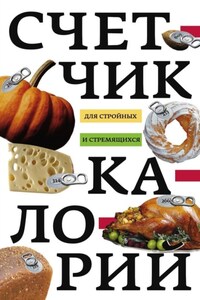First published in Great Britain by Fourth Estate 2015
An imprint of HarperCollinsPublishers
1 London Bridge Street
London SE1 9GF
www.4thestate.co.uk
FIRST EDITION
Text © Joanna Blythman 2015
Original lettuce photograph © Shutterstock
Joanna Blythman asserts the moral right to
be identified as the author of this work
A catalogue record for this book is
available from the British Library
All rights reserved under International and Pan-American Copyright Conventions. By payment of the required fees, you have been granted the non-exclusive, non-transferable right to access and read the text of this e-book on screen. No part of this text may be reproduced, transmitted, downloaded, decompiled, reverse engineered, or stored in or introduced into any information storage retrieval system, in any form or by any means, whether electronic or mechanical, now known or hereinafter invented, without the express written permission of HarperCollins e-books.
Find out about HarperCollins and the environment at
www.harpercollins.co.uk/green
Source ISBN: 9780007548330
Ebook Edition © JANUARY 2015 ISBN: 9780007548347
Version: 2015-12-04
Journalists don’t like to be palmed off with half the story, but even though I had 25 years of food chain investigations under my belt, six books to my name, and a collection of awards and gongs on my trophy shelf, I had a sneaking suspicion that this was exactly what was happening. Unanswered, or only partially answered, questions about the food we consume each day nagged away at the back of my mind. How ‘natural’ is the process for making a ‘natural’ flavouring? What, exactly, is modified starch, and why is this ingredient in so many foods? What is done to pitta bread to make it stay ‘fresh’ for six months? Why, when I eat a supermarket salad, does the taste linger in my mouth for several hours after? Slowly but surely, I realised just how little information about food production methods is in the public realm, despite the best efforts of those of us who interrogate the inner workings of the industry.
Now this assessment might seem counterintuitive, after all, you would be right in thinking that food exposés are a staple ingredient in news headlines. The media attention lavished on food fraud in particular is not inconsiderable. Thanks to such revelations, we know, for example, that crooks have illegally fed a stream of horsemeat into some of our most popular processed meats. We suspect, with some justification, that such incidents are only the tip of an iceberg.
But my frustration, my sense of not quite getting to the bottom of the story, was more fundamental. Forget illegal activities in the food chain, what about the perfectly legal activities that go on every day behind the scenes? What do we know about them? I’m not talking about primary food producers, farmers and growers; what happens down on the farm and out in the fields. This link in our food chain is passably well policed and transparent. Nor am I talking about the abattoir where, once again, there are regular inspections, even the occasional undercover reporter from a vigilant animal welfare group, armed with a video camera. No, my growing preoccupation was just how pathetically little we really knew about processed food, the food that sits on supermarket shelves in boxes, cartons and bottles, everything that comes wrapped or packed in some way, food that has had something done to it to make it more convenient and ready-to-eat.
My interest was in not just the most clearly processed, most industrialised offerings, things like ready meals, chicken nuggets, oven chips and tinned soups, but also those that less obviously bear the stamp of the food factory: washed salads, smoothies, yogurt, cheese, cereal bars, butchered meat, fresh fish, bread, fruit juice, prepared vegetables, and so on. Many switched-on consumers try to avoid the former, but you would need to be a desert island hermit to steer clear of the latter.
Slowly but surely, factory-made food has come to occupy an ever more bloated position in our diet. You might find it all too easy to resist the lure of a turkey drummer, a ready meal, a lurid fruit ‘drink’, or a pappy loaf of standard white bread. You might even boycott the most obvious forms of nutritionally compromised, blatantly degraded offerings, and yet you will still find it hard to avoid the 6,000 food additives – flavourings, glazing agents, improvers, anti-caking agents, solvents, preservatives, colourings, acids, emulsifiers, releasing agents, antioxidants, thickeners, bleaching agents, sweeteners, chelators – and the undisclosed ‘processing aids’, that are routinely employed behind the scenes of contemporary food manufacture. That upmarket cured ham and salami, that ‘artisan’ sourdough loaf, that seemingly authentic Levantine halva, that ‘traditional’ extra mature, vintage Cheddar cheese, those supposedly health-promoting, rustic-looking breakfast cereals, those luxurious Belgian chocolates, those speciality coffees and miraculous probiotic drinks, those virginal yogurts that seem as pure as driven snow, those apparently inoffensive bottles of cooking oil, and much, much more may all have had a more intimate relationship with state-of-the-art food manufacture technology than we appreciate.
